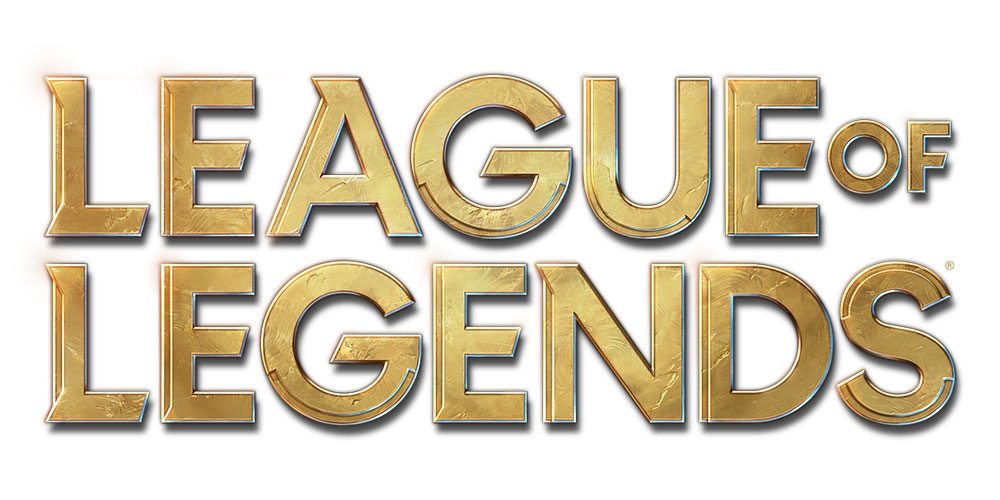League of Legends - Best Game Ever Created?

Ah, League of Legends. No other game has been more fun while simultaneously being one of the most frustrating I've ever played.
What is League of Legends (or LOL)
LoL is a strategy game where two teams, each with five players, attempt to destroy the other team's base. Players control a single champion for taking down towers, making amazing plays, and racking up lots of kills. All this in an attempt to take down the enemy nexus for the win.
League of Legends is a very rich and complex game. It's classified as a MOBA (massive online battle arena) style game and is one of the primary drivers of pushing eSports mainstream.
In this article, we'll touch on the fundamentals as well as the primary game mode (classic).
Nexus
Have you ever played a tower defense game? Think of LoL as a much more advanced version of your classic tower defense. Each team has a nexus with a fountain behind it. The nexus and fountain serve three primary purposes:
- Minions: The nexus spawns small units that march down lanes attacking any enemy in their path, including towers. Minions can be of three types: melee, caster, or siege.
- Fountain: The fountain is where you start the game, respawn after you die, or go when you recall. You can go to the nexus to regenerate health and mana (for casting spells). Just be careful going into the enemy fountain 😉.
- Shop: The shop is where you can buy items (or sell) that augment specific abilities and other stats. You get gold from killing enemy champions, minions, structures, and jungle monsters.
Destroy the enemy nexus, win the game. Sound easy? Not so fast.
Turrets & Inhibitors
Each nexus is guarded by several turrets and inhibitors:
- Turret: Turrets will attack any enemy within its range.
- Inhibitor: Inhibitors prevent the opposite nexus from producing super minions (beefier and longer range). Destroy theirs and you get the supers.
Taking down turrets and inhibitors is the only way to the enemy's nexus. The map is split into three lanes (complete with fog of war), each lane contains three turrets and a single inhibitor. Each nexus has two turrets (rather effective ones at that).
Jungle
Between each lane is the jungle. The jungle contains monsters (neutral) and terrain. Players can traverse the jungle to kill the monsters for special individual, and in some cases, team benefits (called buffs). It's also how players can change between lanes (often used for flanking or gank, unsuspecting enemies).
The two most important monsters are Baron Nashor and Drakes (dragons).
- Baron Nashor: The Baron is the hardest monster to kill and only spawns at a specific time during gameplay. Killing it gives your entire team a huge buff (stronger minions, what?).
- Drakes: There are four different kinds of drakes, each representing a different element (cloud, infernal, mountain, ocean) and an Elder Drake. Killing these will give special buffs as well.
Lanes
Each player has a choice of choosing from five different positions (currently these are based on the recommended team composition or meta). Choose wisely, as each position fills a special and unique role in the game.
- Top lane: The top lane is for champions who are typically tankier and who can go solo. They don't require as much team support and due to their tougher nature should focus on the most powerful enemy champion.
- Jungle:
Junglers are blamed for everything. Junglers assist all team members by jumping between lanes and manage all the monsters (remember that killing monsters gives bonuses, including extra gold!). - Mid Lane: The mid lane is for players who can go it alone or assist the team. A mid lane champion usually does all it's damage really fast then has to get out of the fight. This makes them perfect as opportunists.
- Bot Lane: The bottom lane starts out as the weakest. They require a lot of hand-holding and protection. As they gain experience and gold they become the carry or the highest consistent damage dealer.
- Support: The support starts the game focusing heavily on the carry then gradually plays a more general support role for the entire team. They help set up plays, keep allies alive, and provide vision control (warding totems can be placed on the map to reveal the surrounding area—know where your enemies are).
Champions
At this point, you may be wondering, "how many champions are in league of legends?" As of this writing, there are more than 140 champions to choose from...overwhelmed yet?
Thought so, but don't worry. The versatility of the game is in large part due to how many different kinds of champions there are. It also makes it possible for you to find a handful that matches your playstyle, making the game more enjoyable.
As the game progresses your champion gets more powerful. There are three ways to improve your champion in the game:
- Gold: You earn gold from killing enemy champions, minions, structures, assisted kills, items, etc. Gold lets you buy items from the shop.
- Shop: When visiting the fountain you can buy items to equip your champion with. More on what items do below.
- Experience: Experience is gained in much the same way as gold, killing enemy champions or minions, assisting in kills, and destroying enemy turrets and inhibitors. Experience leads to leveling up which boosts your base stats and unlocks abilities.
Earning experience and gold are vital to overwhelming the enemy team. Without these, you'll be nothing but squishy.
Abilities
Each champion has a unique set of spells, abilities, and stats. This combination sets the stage for what lanes or roles that champion is best suited for. A champion can also hold up to seven items.
-
Spells: A spell is a unique ability that a champion can use at any time in the game. The most popular ones are:
- Smite (to give junglers an easier time killing monsters)
- Teleport (for moving to a different part of the map very quickly via turret, ward, or minion)
- Ignite (for adding some extra over-time damage to an enemy champion)
- flash (for quick last second getaways or as a gap closer).
- Items: Items can improve max health, attack speed, movement speed, physical armor, magic armor, range, damage, ability cooldown, and much more.
-
Abilities: Abilities are unlocked as your champion levels up. Use these abilities to achieve your in-game objectives. Each champion has the following:
- A passive ability (one that typically gives your champion some sort of bonus)
- basic abilities (ones that can be leveled up and cost mana/have cooldowns)
- An ultimate (your ultimate is typically the most effective ability in the game)
That's it.
Ok, not really. There is much more to the game than that, but consider this a short introduction to the basics of the game and a quick how to play League of Legends.
eSports & Ranked Play
Ranked (or competitive) play and how League of Legends has influenced the rise of eSports merit their own articles but we'll touch on it a little here.
Ranked play in League of Legends is when you play the classic game mode (everything we've described above) but in a more serious setting.
Ranked is exactly as it sounds. The more you play (win or lose) you get assigned a rank, often used as an indication of how good you are at the game.
There are currently nine tiers:
- Iron
- Bronze
- Silver
- Gold
- Platinum
- Diamond
- Master
- GrandMaster
- Challenger
Each tier has fewer and fewer players qualifying. Most professionals are in the Challenger tier.
Think of ranked kind of like a sport. It's competitive. Players want to improve. They want to achieve a higher and higher rank. Sometimes for clout and sometimes for possible entry into playing the game professionally.
Do you have what it takes to climb?
How Many People Play League of Legends
It's hard to nail down the exact number of players but it's incredible. The game launched on October 27, 2009, and has grown significantly since then. Here are some highlights:
- 2011: 11.5 million monthly and 4.2 million daily
- 2013: 32 million monthly and 12 million daily
- 2014: 67 million monthly, 27 million daily, and 7.5 million concurrent
- 2018: 111 million players
Just massive. Just how big is League of Legends? In 2018 the game generated annual revenue of $1.4 billion.
How to download League of Legends
The best way to download and get started on League of Legends is to head over to the official website: leagueoflegends.com. They've made it easy to get set up and going. Just follow all the prompts in the setup wizard and you'll be good to go.
The great part of LoL is that it can run pretty well on most systems (you may have to tweak your graphics down quite a bit if you have an old system). You can play the game on a mac or pc.
In closing keep in mind, you will be entering a player base and ecosystem that has been around for a long time. The League of Legends environment is notorious for being toxic and hard on newcomers.
Our advice is to just mute anyone rude until you're comfortable enough with the game to push back a little 😜. When it comes down to it, it's a game. Don't worry about being super competitive until you start playing ranked (where the most serious players dwell).
See you on the Rift!
Jordan Knight is the vice president of eSports at Stimpack. He loves competitive gaming and helping competitors reach their peak performance. He remains committed to the community and has had success both in-game and outside of gaming.
All Content
